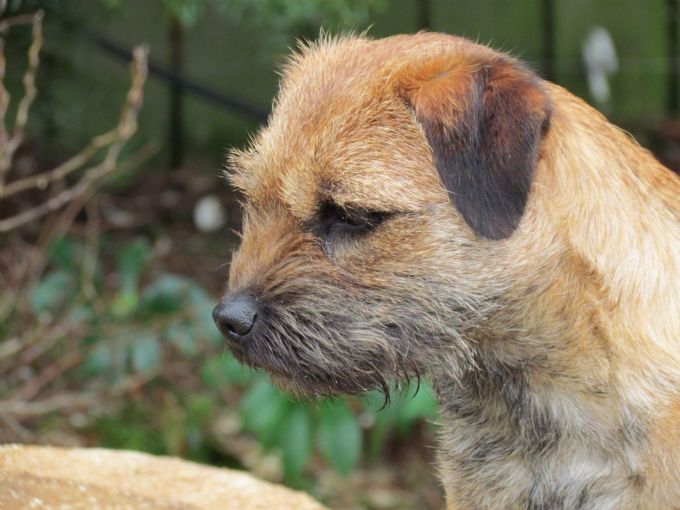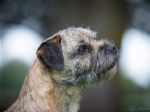The Border Terrier was originally bred in the Cheviot Hills area near the border between England & Scotland to help farmers drive predatory foxes from their dens & kill them. This sturdy little fellow has long enough legs & enough stamina to keep up with a horse, even though he is quite small. The bold little Border Terrier has also been used to hunt marten, otter & fierce badger. The breed was once known as the Coquetdale Terrier (amongst other names), but the name Border Terrier, taken from the Border Hunt, was adopted in 1870. Today due to his winning personality, adaptability & friendliness, the breed is highly esteemed as a companion dog, yet he can still serve as a fine farm dog, helping to control vermin
TEMPERAMENT
Lively & alert but also mild-mannered, the Border Terrier is a loving good natured companion that loves being with its owner. It is generally good with other dogs & cats, not with rodents. It is very good with children & makes a good companion for people of all ages.
UPKEEP
The Border likes activity & needs a good walk on a leash, a vigorous game session or an off-lead expedition in a safe area every day. It can live outdoors in temperate climates, but it does much better when allowed to divide its time between house & yard. The Border Terrier has a harsh weather resistant coat with a hard, wiry outer coat & soft undercoat which repels most dirt. Its harsh coats need brushing weekly, plus stripping of dead hairs about four time yearly to maintain its clean outline.
CHARACTERISTICS
Head like that of an otter, moderately broad in skull, with a short strong muzzle, a black nose is preferable but a liver or flesh-coloured one is not a serious fault. Dark eyes with keen expression. Small 'v' shaped ears of moderate thickness & dropping forward close to the cheek. Teeth should have a scissor like grip, with the top teeth slightly in front of the lower, but level mouth is quite acceptable. An undershot or overshot mouth is a major fault & highly undesirable. Neck is of moderate length. Forelegs are straight & not too heavy in bone. Body is deep & narrow & fairly long, ribs carried well back, but not oversprung, as a terrier should be capable of being spanned by both hands behind the shoulder. Hindquarters are racy & loin strong. Feet are small with thick pads. Tail is moderately short & fairly thick at the base, then tapering, set high & carried gaily but not curled over the back. Coat is harsh & dense with close undercoat. Skin must be thick. Colour can be red, wheaten, grizzle & tan or blue & tan.


